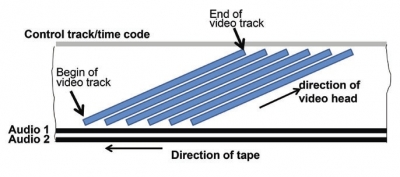
A home Video recorder picks up electrical signals from the television station at the same time as your television set. But instead of converting the signals directly to pictures, the video stores them on magnetic tape in the same way that a tape recorder stores sound signals. Because television signals carry pictures as well as sound, home video tape is generally four times the width of a sound cassette tape.
Is the video recorder is connected directly to the aerial, it picks up television broadcasts when switched on, whether or not to the television is on. Both can be turned to pick up different programmes at the same time.
The two main videocassette a recording system is available are Betamax, introduced by the Japanese company Sony and in 1975, and VHS (video home system) pioneered by JVC (Japan Victor company) in 1976. Each system needs different cassettes different recorders. Betamax produces slightly better quality pictures, but VHS tapes can run longer up to 4 hours. VHS has proved the more popular of the two and new Super VHS has better quality pictures than either of the standard systems.
Recording and playback
When a video tape cassette is fitted into the video recorder and the record button pressed, the machine draws a loop of tape from between the two reels in the Cassette and wraps it round a rotating drum driven by an electric motor.
The picture recording heads, usually two, or mounted on the drum facing outwards, and imprint the signals on the tape as they rotate with the drum. The heads are tiny electromagnets, and operate in the same way as for sound a tape recording.
The tape runs past the drum at an angle. The picture signals are recorded in the central area as a series of sloping tracks, and the accompanying sound signals are recorded as lengthways tracks along one edge of the tape.
As with the tape recorder, playback is a reversal of the recording process. When the tape is loaded and the play button pressed, the stored signals on the magnetic tape produced electrical signals in the playback head. This feeds the picture and sound signals to the television set, where the recording is recreated on the screen.
Picture Credit : Google

